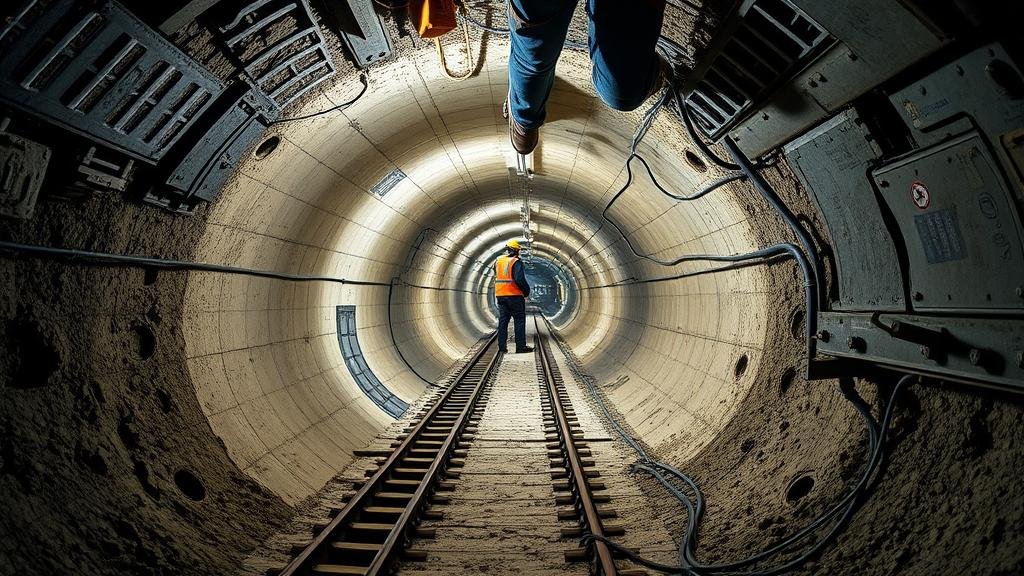How to Plan and Layout an Underground Tunnel System
How to Plan and Layout an Underground Tunnel System
Planning and laying out an underground tunnel system is a complex and multi-faceted endeavor that requires a clear understanding of engineering principles, geographical conditions, and urban planning. This article provides a comprehensive guide on the key steps and considerations involved in the process, from initial feasibility studies to final construction.
Feasibility Studies and Planning
The first step in the development of an underground tunnel system is conducting feasibility studies. These studies help determine whether the project is practical and justifiable. Key components include:
- Site Assessment: Analyze the geographical and geological features of the area. Physical properties such as soil composition, rock formations, and groundwater levels can significantly influence construction methods.
- Environmental Impact: Evaluate the potential environmental consequences of the tunnel, such as effects on local wildlife and ecosystems, groundwater changes, and air quality.
- Traffic and Usage Analysis: Consider the anticipated traffic volume and type, including whether the tunnel will be for vehicles, trains, or pedestrians, which directly impacts design specifications.
For example, the development of the Channel Tunnel, which connects the UK and France, included extensive geological surveys and environmental assessments to address challenges related to soil conditions and existing land use.
Design Considerations
Once feasibility studies indicate that a project is viable, the next phase is designing the tunnel. This involves several critical considerations:
- Tunnel Geometry: Define the shape, size, and alignment of the tunnel. Common shapes include circular and horseshoe, each having benefits and drawbacks depending on load-bearing requirements and excavation methods.
- Structural Support: Plan for construction materials and techniques to ensure the tunnels stability. Reinforcement schemes differ; for instance, concrete segments can be used for shield tunneling, while rock bolts support cut-and-cover techniques.
- Safety Factors: Incorporate emergency exits, signage, ventilation systems, and fire suppression measures in the design to enhance safety for both construction crews and future users.
A notable example is the Big Dig project in Boston, where innovative design strategies were implemented to ensure safety and minimize disruption.
Construction Techniques
The excavation and construction of tunnels can be accomplished through various techniques depending on the tunnels depth and the surrounding environment. Common methods include:
- Shield Tunneling: This involves using a tunneling machine that simultaneously excavates and supports the tunnel walls. This method is effective in soft soil conditions.
- Cut-and-Cover: In this method, a trench is excavated, and then the tunnel structure is built on the surface before being covered. It is suitable for shallow tunnels and less congested areas.
- Natural Excavation: In cases where rock formations are present, blasting may be necessary to create the tunnel, requiring careful planning and monitoring to ensure safety.
Each technique presents unique challenges and advantages; thus, selecting the right method is crucial for the projects success. For example, the construction of the Gotthard Base Tunnel in Switzerland incorporated advanced tunneling methods to navigate through hard rock and high-pressure water zones.
Post-Construction and Maintenance
After the completion of the tunnel, long-term maintenance and monitoring are essential for ensuring operational safety and efficiency. This phase includes:
- Regular Inspections: Infrastructure must undergo routine inspections to identify any wear or damage that could compromise safety.
- Monitoring Systems: Useing technology for real-time monitoring of structural integrity and environmental conditions aids in the early detection of potential issues.
- Maintenance Protocols: Establishing a comprehensive plan for maintenance activities, including regular cleaning, repairs, and updates to safety equipment.
The maintenance practices employed in systems like the London Underground illustrate the importance of continuous inspection and operational safety measures, enhancing service reliability over decades.
Conclusion
In summary, the planning and layout of an underground tunnel system demand comprehensive research, innovative design, and stringent construction practices. By following the outlined stages–from feasibility studies to construction techniques and maintenance plans–engineers and planners can develop effective underground solutions that meet modern transportation needs while ensuring sustainability and safety. Engaging with local communities and stakeholders throughout the process further strengthens the projects acceptance and success.



